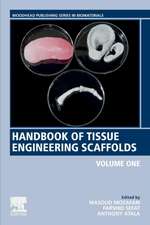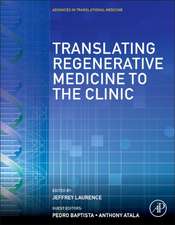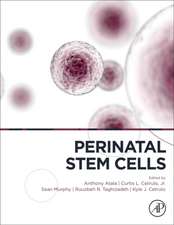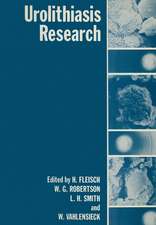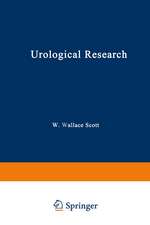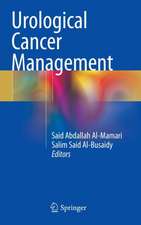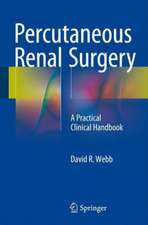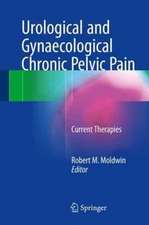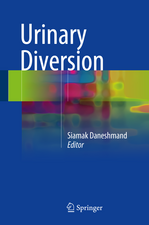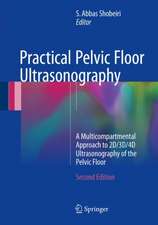Bladder Disease: Research Concepts and Clinical Applications
Editat de Anthony Atala, Debra Sladeen Limba Engleză Paperback – 15 apr 2013
| Toate formatele și edițiile | Preț | Express |
|---|---|---|
| Paperback (1) | 1393.50 lei 38-44 zile | |
| Springer Us – 15 apr 2013 | 1393.50 lei 38-44 zile | |
| Hardback (1) | 1441.52 lei 6-8 săpt. | |
| Springer Us – 31 dec 2003 | 1441.52 lei 6-8 săpt. |
Preț: 1393.50 lei
Preț vechi: 1466.84 lei
-5% Nou
Puncte Express: 2090
Preț estimativ în valută:
266.73€ • 289.83$ • 224.20£
266.73€ • 289.83$ • 224.20£
Carte tipărită la comandă
Livrare economică 17-23 aprilie
Preluare comenzi: 021 569.72.76
Specificații
ISBN-13: 9781461347071
ISBN-10: 1461347076
Pagini: 1016
Ilustrații: XXVI, 952 p.
Dimensiuni: 178 x 254 x 53 mm
Ediția:2003
Editura: Springer Us
Colecția Springer
Locul publicării:New York, NY, United States
ISBN-10: 1461347076
Pagini: 1016
Ilustrații: XXVI, 952 p.
Dimensiuni: 178 x 254 x 53 mm
Ediția:2003
Editura: Springer Us
Colecția Springer
Locul publicării:New York, NY, United States
Public țintă
ResearchCuprins
Oncology and Cellular Biology.- 1. Recent Developments in the Treatment of Bladder Cancer.- 2. Interferon-? Response and Signal Transduction Pathway in Transitional Carcinoma Cell Lines.- 3. Molecular Cloning and Expression of Uroplakins in Transitional Cell Carcinoma.- 4. Application of a Novel Protein Chip Mass Spectrometry Technology for the Identification of Bladder Cancer-Associated Biomarkers.- 5. The Photodynamic Diagnosis (PDD) for Early Detection of Carcinoma and Dysplasia of the Bladder.- 6. Prediction of Lymph Node Metastasis Based on P53 and nm23-Hl Expression in Muscle Invasive Grade III Transitional Cell Carcinoma of Bladder.- 7. Detection of HER-2/neuCEP 17 Mutations at Invasive Bladder Cancer.- 8. Ki67, P53, nm23, and DNA Cytometry in Bladder Cancer: Potential Markers for Detection of Recurrence.- 9. Comparison of Cytology and Nuclear Matrix Protein 22 (NMP 22) for the Detection and Follow-Up of Bladder Cancer.- 10. The Effect of Contrast Material on Transitional Cell Carcinoma Viability.- 11. Fluorodeoxyglucose Positron Emission Tomography Studies in the Diagnosis and Staging of Transitional Cell Carcinoma.- 12. Radiochemotherapy in Locally Invasive Non-Metastatic Carcinoma of the Bladder.- 13. Gene and Antisense Therapy of Bladder Cancer.- 14. Tumor Suppressor Genes of Bladder Cancer and Potential for Gene Therapy.- Muscle, Matrix, and Obstruction.- 15. Molecular Response of the Bladder to Obstruction.- 16. The Role of Lipids and Lipid Metabolites in Urinary Bladder Dysfunction Induced by Partial Outlet Obstruction.- 17. Intercellular Communication and Bladder Function.- 18. Ischemia as an Etiological Factor in Bladder Instability: Implications for Therapy.- 19. Effect of Chronic Ischemia on Bladder Structure and Function.- 20. Ultrastructural Diagnosis of Neuropathic Detrusor Overactivity: Validation of a Common Myogenic Mechanism.- 21. Serial Changes of Smooth Muscle Cell Phenotypes in Rat Urinary Bladder Following Partial Outflow Obstruction.- 22. Study of Detrusor Dysfunction Due to Outlet Obstruction: Link Between Analysis of Uroflows of Men with Benign Prostatic Hyperplasia and Animal Studies.- 23. Ultrasonic Measurement of Bladder Weight as a Novel Urodynamic Modality.- Neurophysiology, Neurogenic Bladder, and Incontinence.- 24. Experimental Neurogenic Cystitis.- 25. Murine In Vitro Whole Bladder Physiology.- 26. Ca2+ Sparks and KCa Channels: Novel Mechanisms to Relax Urinary Bladder Smooth Muscle.- 27. The Effect of Intravesical Capsaicin and Resiniferatoxin in Neurogenic Bladder Dysfunction.- 28. On the Physioanatomy of Micturition and Urinary Continence-New Concepts.- 29. Stress Urinary Incontinence: New Concept of Pathogenesis and Treatment by Pudendal Canal Decompression.- 30. Transcutaneous Electrovesicogram in Normal Volunteers and Patients with Interstitial Cystitis, Neurogenic Bladder, Benign Prostatic Hyperplasia, and after Cystectomy.- 31. Extracorporeal Electromagnetic Stimulation for Urinary Incontinence andBladder Disease.- 32. Pubovaginal Sling Surgery without Using Abdominal Leak Point Pressure: An Outcomes Analysis.- 33. The Use of Synthetic Materials in Pubovaginal Sling.- 34. Surgical Implantation of the Synthetic Sling (The 6-Point Fixation Technique and Weight-Adjusted Spacing Nomogram): Technique and Results.- 35. Reconstructive Surgery in Neuropathic Bladder.- 36. The Role of the Simple Cystectomy in Urologic Surgery.- Immunology, Inflammation, and Infection.- 37. Neurogenic Inflammation of the Bladder.- 38. Urine-Induced Apoptosis in Cultured Bladder Urothelial Cells.- 39. Bacillus of Calmette and Guerin Modulates Nuclear Factor Kappa ? in Two Urothelial Carcinoma Cell Lines.- 40. Induction of Urothelial Cell Proliferation by Fibroblast Growth Factor-7 in RAG 1-Deficient Mice.- 41. Development of a Recombinant FimCH Vaccine for Urinary Tract Infections.- 42. Intravesicular Pain Mapping.- 43. A Hypothesis for the Etiology of Interstitial Cystitis.- 44. Pentosanpolysulfate (Elmiron) is a Potent Inhibitor of Mast Cell Histamine Secretion.- 45. The Efficacy of Intravesicular Sterile Sodium Chondroitin Sulfate 0.2% in Potassium Tested Positive Patients with Interstitial Cystitis.- 46. Cystectomy Causes Immunosuppression in Bladder Cancer.- New Frontiers and Therapies.- 47. Nocturia.- 48. The Fate of Urinary Bladder Smooth Muscle after Outlet Obstruction—A Role for the Sarcoplasmic Reticulum.- 49. Alteration of Collagen Three-Dimensional Architecture in Noncompliant Human Urinary Bladder.- 50. Modulation of Angiogenesis: Experimental Strategies and Potential Therapeutic Applications.- 51. Methods of Testing Urethral Resistance in the Female Rat.- 52. Virtual Reality Surgical Simulation for Lower Urinary Tract Endourologic Surgery.- 53. Autologous Muscle Transfer for Reconstruction of the Lower Urinary Tract.- 54. Effectiveness of Denuding the Intestinal Mucosa by Submucosal Injection in the Porcine Model.- 55. Urinary Diversion in the Management of Chronic Perineal Skin Ulceration in Spinal Cord Injured Patients Following Sphincterotomy.- 56. The Artificial Urinary Bladder.- 57. Comparison of the Breaking Strength of Polyglactin Mesh in Urine, Serum, and Cell Culture Media.- 58. Growth of Cultured Human Urothelial Cells Into Stratified Urothelial Sheet Suitable for Autografts.- 59. Future Perspectives in Bladder Reconstruction.

